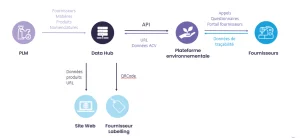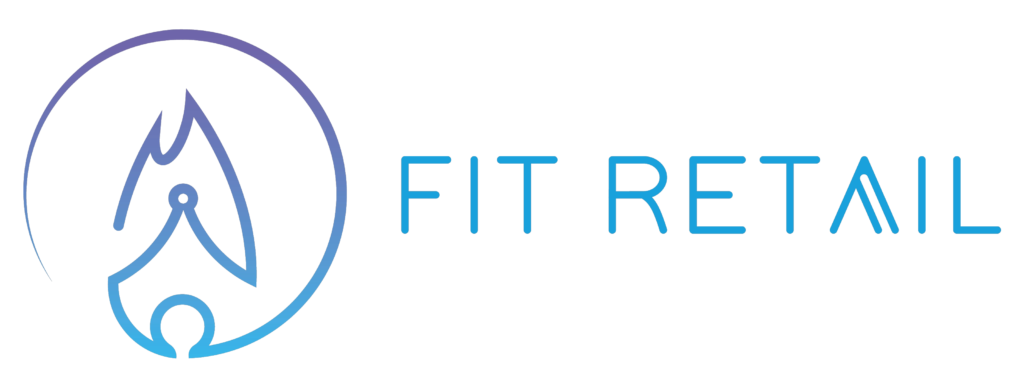The textile industry is facing a series of major challenges in terms of sustainability and respect for the environment. The AGEC and Climate & Resilience Acts have been passed. These two pieces of legislation were designed to meet the pressing challenges of climate change, excessive resource consumption and pollution control. In this article, find out more about environmental labelling and data collection. We’ll also look at why this is so important for the textile sector and more sustainable fashion.
The AGEC Act encourages the implementation of eco-responsible practices throughout the value chain, from product design to end-of-life. France adopted the Climate and Resilience Act in 2021. It encourages textile companies to integrate environmentally-friendly practices and report on their carbon footprint.
Faced with these new regulations, the textile sector must rethink its production, distribution and consumption models. It is now essential for companies to innovate in order to reduce their ecological footprint, encourage product recyclability, improve the traceability of their supply chain and promote more responsible consumption.
Nevertheless, compliance takes time, and at the same time, the schedule of deadlines is advancing at breakneck speed. So how do you face up to these major challenges? We take a closer look at the subject in this new article.
📅 Let’s start with a recap of the calendar

🤔 In practical terms, what does the application of the AGEC and Climate & Resilience laws mean? ?
Environmental labeling

This is a visual to be affixed to packaging or communication media for textile products. It allows you to mention the climatic and ecological impact of a product. This translates into a score between A and E. It takes into account :
- Greenhouse gas emissions (EGES)
- Damage to biodiversity
- Consumption of water or other natural resources.
🏷️ What method is used for this environmental display?
- La méthode décrit précisément le calcul d’une performance environnementale. L’analyse du cycle de vie (ACV) se base sur une approche multi-étape et multicritère. On affiche cette performance via le barème suivant : note / score.
- Au moins 3 entreprises différentes minimum s’engagent à tester la méthode avec des études de cas sur des produits réels.
To date, 11 solutions have been analyzed. They are currently being tested by several ready-to-wear and luxury brands. These solutions include
- Fairly Made
- Glimpact
- Footprint Target (Green Score Capital)
- Good Fabric
- Clear Fashion
- ITU
- YuKan
- EcodesignScore (DEFI)
(Non-complete list)
Discover our focus on the environmental platforms that will revolutionize the textile sector!
Although the approach is similar, the 11 solutions do not use the same calculation methods. On the one hand :
- Le socle ADEME (développé en France par l’ADEME), qui utilise principalement des indicateurs liés aux émissions de gaz à effet de serre
To see what this display actually looks like, take a look at our focus on 5 environmental platforms.
ADEME commissioned In Extenso Innovation Croissance to analyze these solutions. The aim is toevaluate the various experiments. This work of evaluating solutions in order to validate the criteria and associated calculation methods is still in progress.
Bérengère Couillard, Secretary of State for Ecology, announced in March 2023 that the 8 environmental impact criteria would be further developed. These are :
- Water consumption in the manufacture of materials
- The physical durability of textiles
- Enhancing production conditions in France or Europe
- Issues related to the use of pesticides and chemicals in textile manufacturing
- Issues related to microplastic waste
- Conditions for recovering recycled materials
- Conditions for recycling reconditioned textiles, which are repaired and returned to the market
- The possibility of taking into account the impact of fast fashion through buy-back incentives or incentives to repair clothes.
The aim was to produce a first version of the calculation method by summer 2023. However, a delay was already foreseen, and Bérengère COUILLARD’s recent change of post may exacerbate it.
Here is the latest calendar:

Source: Ademe
The aim of environmental labelling is to provide consumers with clear, harmonized information on the environmental impact of the products they buy. However, there are a number of questions to ask in order to make it transparent:
- How do you measure a product’s environmental impact?
- How can we make this impact understandable to consumers?
- How can you avoid greenwashing (whether intentional or unintentional)?
- How can we be sure that the notes are a true reflection of reality?
Whatever calculation method you use, the first step will be the same for everyone. Lifecycle analyses must be carried out on the entire product catalog. This requires the ability to do so efficiently, autonomously and automatically.
🌱 Lifecycle analysis, an essential lever for calculating one’s environmental impact.
Life cycle assessment is a tool for evaluating environmental impacts. and, above all, a genuine data repository. It identifies and quantifies the physical flows of materials and energy, and attests to the credibility of our environmental approach.

The role of this repository is also to make things easier for companies, and to enable them, among other things, to have default values (called semi-specific data) to fill in information that can’t be found, and quickly arrive at impact results, and then the score.
Companies must carry out LCAs as soon as they implement platforms. However, it can take between 6 months and 1.5 years to put effective processes in place. So, given the timetable, we might as well get started right away!
And now it’s time to tackle data collection and management. Indeed, before we can communicate on a product’s ecoscore, we need to collect all the data linked to its development. And it’s far from an easy stage to manage, since it involves a number of different players: suppliers, factories, manufacturers, and so on.
This can be a lengthy process. Depending on the amount of data to be collected and the precision required, it can take between 3 and 21 days for up to 12 products. Likewise, this time will vary according to the size of the company and the resources it is able to put in place for collection, as well as its maturity with regard to environmental issues.
This is followed by a series of time-consuming checks, depending on the specific methods used by the environmental platforms. But who collects the data? There are two possible scenarios:
1️⃣ The environmental platform: collects data by connecting to a portal accessible by suppliers, by e-mail or by contacting suppliers directly.
2️⃣ The brand: which will try to gather as much information as possible from its suppliers and trace the various stages in the manufacture of its products.
In both cases, you need to select the right level of information. It should also be noted that all traceability information is linked to the manufacturer, making the supplier central.
To facilitate the collection and management of this data, PLM remains a particularly suitable tool. In fact, it will enable you to manage all information relating to the manufacturer, but also to manage certificates (Reach, Oeoko tex…), the effective dates of certificates, provide you with alerts if documents in the PLM are obsolete, manage supplier audits, corrective actions etc.
Here’s an example of traceability data management using PLM :

The brand develops and references its products in a PLM system. It contains information on the product, its nomenclature with the list of materials, and information on material and product sourcing with the list of suppliers.
This information will be stored by interface in a data hub, which will be the reference base for the various systems collecting this information. In our case, the information is sent by API to the environmental platform. Then begins the data collection phase mentioned above. Different suppliers receive emails, phone calls or portal access.
Once the data has been collected and the score and various components have been calculated, this information can be sent back to the customer. They can be made accessible via a URL, which will appear on the product page of the customer site, or via a QRCode to be scanned on the in-store label.
✅ To sum up…
In conclusion, here’s what you need to remember about the implementation of the new regulations:
1️⃣ The French Ministry of Ecological Transition is announcing controls from 2023, so watch out for fines of up to €15,000 per product for legal entities.
2️⃣ Environmental labelling requires LCAs, so don’t neglect this phase.
3️⃣ Data collection takes time (in terms of organization and deadlines), so don’t underestimate this stage.
4️⃣ PLM is the ideal tool for collecting and managing data with your entire ecosystem. If you haven’t already done so, you’d do well to get started quickly, to save time and improve efficiency later on. Don’t hesitate to contact a member of our team for more information and tailored support.
5️⃣ Finally, to familiarize yourself with environmental platforms (if you haven’t already done so), don’t hesitate to use the ecobalyse .
Source image : Textile traceability

